Sylvania Metal halide lamps without reflector
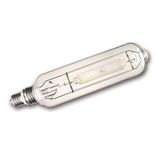
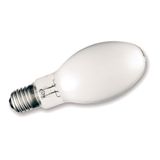

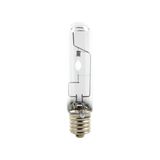
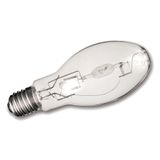
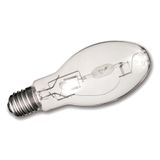

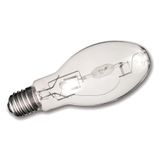
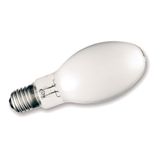
Projects still specify bare-source HID where long throws, tight beams, and hot environments defeat many retrofit options. Sylvania’s open-rated capsules, protected arc tubes, and stable chemistry give designers consistent centre-beam punch with predictable commissioning on 220–240 V systems, DALI/HID or magnetic gear, and declared end-of-life voltage for sizing contactors and ignitors.
sylvania metal halide lamps without reflector range and use cases
Floods, sports heads, and high-bay gear trays often carry the optics; the lamp only needs a stable arc and clear envelope. Families span 35–2000 W with E27/E40, RX7s, G12, G8.5, G22, and PGJX bases. Clear and coated outer bulbs are available, but the sylvania metal halide lamps without reflector focus is on clean arc geometry and repeatable placement so reflectors do the optical work.
sylvania mh bulbs open fixture safety and compliance
Only protected/“open-rated” capsules belong in luminaires without a containment lens. Look for arc-tube shrouds and markings per IEC 62035 and luminaire notes per EN 60598. Hot-restrike behaviour and ignitor pulse (typically 3–5 kV) must match gear, and cable length limits apply. When schedules call for sylvania mh bulbs open fixture, lock the lamp code as “protected” in the BOM to avoid unsafe substitutions.
sylvania high output mh lamps photometrics and gear pairing
Tall racks, masts, and long throws demand high luminance at the arc. Ceramic variants push CRI 85–95 at 3000/4000/5000/6500 K; quartz types trade some colour stability for higher lumen bins. Electronic HID ballasts (EN 61347-2-12) calm flicker and allow night-setback; magnetic sets remain valid on fixed output. For consistent aiming, specify reflector family first, then choose sylvania high output mh lamps to hit spacing with the fewest poles.
sylvania metal halide discharge lamps technical specifications and standards
Typical figures: efficacy ~65–110 lm/W (type dependent), warm-up 2–5 min, hot-restrike per gear, ambient −25…+50 °C with ventilated housings. UV control relies on outer bulb coatings or luminaire shields. Compliance touchpoints for sylvania metal halide discharge lamps: IEC 62035 (lamp safety), IEC 60061 (caps), EN/IEC 61347 and 60927 (gear/ignitors), EN 55015 and EN 61000-3-2 (EMC/harmonics), EN 62471 (photobiological assessment).
sylvania clear bulb mh lighting optics and aiming
Clear outer bulbs deliver tight hotspots for distance and vertical illuminance; coated bulbs soften cut-off near residences. Align the arc index to the reflector key to avoid colour fringing and tilt artefacts. Maintenance crews note that sylvania clear bulb mh lighting keeps CBCP high in narrow beams, but requires correct visor or louvre kits to control glare on pedestrian routes.
sylvania industrial lighting lamps applications and compatibility
Ports, yards, process bays, and arenas use asymmetric or narrow optics with secure lampholder torque and anti-vibration hardware. Surge levels of 4–6 kV L-N are typical outdoors; contactors must tolerate ballast peaks. Standardising zones under sylvania industrial lighting lamps keeps ballast curves, ignitor topology, and spares aligned so night crews swap fast without re-aiming.
sylvania arc tube metal halide lamps service and lifetime
Arc-tube chemistry and wall loading decide colour shift and lumen depreciation. Ceramic tubes hold tone longer; quartz needs earlier group relamp thresholds. Inspect socket spring force and keep shields intact where mandated. Document run-hour limits and end-of-life voltage so sylvania arc tube metal halide lamps are replaced before uniformity drifts or nuisance cycling appears.
Product range and series overview
Single-ended tubular/elliptical; double-ended quartz for sports floodlights; compact ceramic capsules for retail punch; coated versions for comfort-sensitive streets. Emergency/hot-restrike gear is specified where recovery time is critical; DALI-addressed electronic HID allows logging of run hours in monitored estates.
Applications and compatibility
- High-bays and logistics aisles: narrow/medium beams, protected open-rated lamps where fittings lack glass; verify torque and vibration class.
- Sports and large façades: clear capsules for reach; tight aiming; visor kits for spill control.
- Roads and yards: coated lamps reduce peak intensity; surge coordination at feeder and head.
Always check ignitor cable limits, ballast class, and luminaire “enclosed vs open” requirement before release.
Selection criteria for B2B clients
- Fix mounting height, setback, and lighting class/uniformity. 2) Choose optic first; select wattage to meet target lux with minimum poles. 3) Lock base and lamp voltage to the chosen ballast; record end-of-life voltage. 4) Decide on dimming/night-setback (electronic HID only) and hot-restrike needs. 5) Define relamp thresholds and spares by ANSI/MPN to hold colour and lumen stability.
Integration with other Sylvania products
Use Sylvania electronic HID gear where flicker, dimming, or analytics matter; magnetic sets stay in play for fixed output with robust contactors. Photocells/CMS timers sit upstream; motion trimming is possible on suitable electronic gear. For mixed estates, keep bracket geometry common with Sylvania LED floods so pole spacing and aiming remain valid during phased migration.
Advantages of working with Bankoflamps
We align pricing to area schedules and show live EU stock before crews are booked. Quotes land in about an hour with EAN/MPN so variants stay locked. Your portal tracks lead times, shipment status, and downloadable price lists with stable validity windows. Approved clients can use post-payment up to 30 days. We consolidate partials to cut freight, and your account manager cross-checks base type, lamp voltage, ballast/ignitor pairing, surge level, reflector family, visor sets, and mounting hardware against your drawings so cartons arrive site-ready across France, the Baltics, Germany, Spain, Italy, Belgium, and the Netherlands.